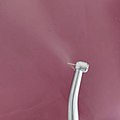Dental aerosol: Difference between revisions
CSV import |
CSV import |
||
| Line 28: | Line 28: | ||
[[Category:Infection control]] | [[Category:Infection control]] | ||
[[Category:Medical terminology]] | [[Category:Medical terminology]] | ||
<gallery> | |||
File:Dental_aerosol.jpg | |||
File:Dental_aerosols.jpg | |||
</gallery> | |||
Latest revision as of 02:07, 17 February 2025
Dental aerosol is a term used to describe the airborne particles produced during dental procedures. These particles can contain a variety of substances, including water, saliva, blood, microorganisms, and other debris. Dental aerosols can pose a risk of infection, particularly in the context of diseases such as COVID-19.
Overview[edit]
During dental procedures, a variety of instruments are used that can produce aerosols. These include high-speed handpieces, ultrasonic scalers, and air-water syringes. The aerosols produced can contain a variety of substances, including water, saliva, blood, microorganisms, and other debris.
Risks[edit]
Dental aerosols can pose a risk of infection, particularly in the context of diseases such as COVID-19. The aerosols can contain microorganisms, which can be inhaled by the dentist, dental staff, and patients, potentially leading to infection.
Mitigation[edit]
Various strategies can be used to mitigate the risks associated with dental aerosols. These include the use of personal protective equipment (PPE), such as masks and eye protection, as well as the use of high-volume evacuation (HVE) to remove aerosols from the air. In addition, dental offices can implement infection control protocols, such as sterilizing instruments and surfaces, to further reduce the risk of infection.
See also[edit]
References[edit]
<references />




